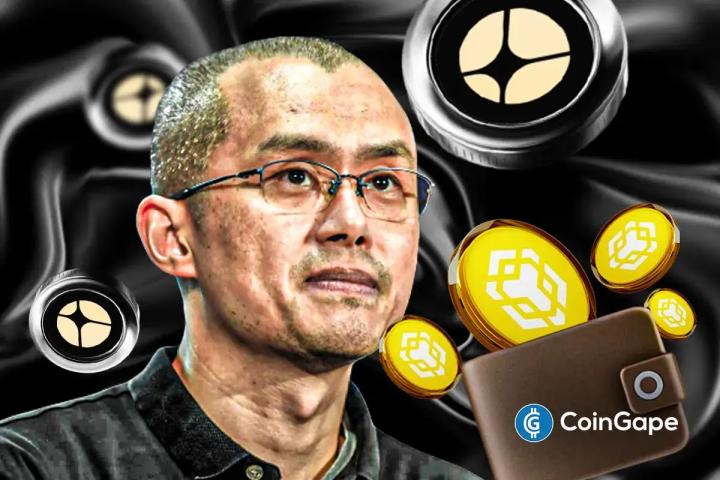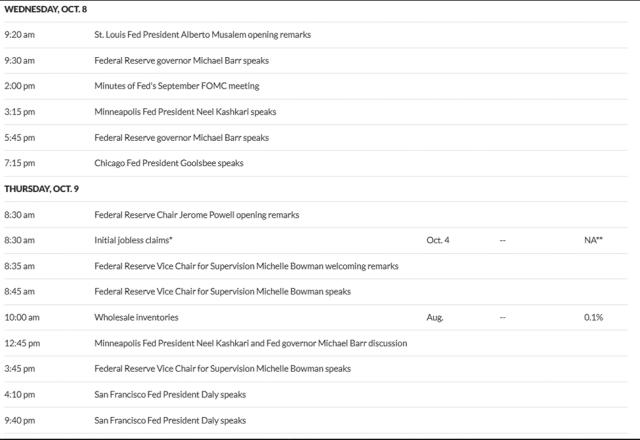Meme coins are undoubtedly the most eye-catching and perplexing phenomenon in the cryptocurrency world. From the multi-billion dollar empire spawned by the Japanese Shiba Inu emoji, to Dogecoin, single-handedly made famous by Tesla CEO Elon Musk, these tokens, originating as jokes and thriving within communities, are constantly challenging the values of the traditional financial world with their volatile fluctuations and enormous wealth creation.
Are they worthless digital bubbles, or do they represent a completely new asset class? Let's examine them in the context of traditional finance and delve deeper into their roles. We'll discover that meme coins aren't a single entity, but rather a blend and amplification of multiple marginalized or suppressed roles within the traditional financial world. They serve as the ultimate outlet for speculative desire, a totem of the financialization of community culture, and perhaps a mirror that reveals the true nature of modern finance.

1. Market Level: "High-Risk Lottery" and "Penny Stocks or Junk Bonds"
From the perspective of traditional finance, Meme coin is far from the "value investment" tools that ordinary investors come into contact with in traditional finance (such as blue-chip stocks and government bonds). Its most accurate counterpart is lottery tickets and casino chips.
High-risk lottery tickets or "casino chips." The essence of traditional lotteries is that buyers pay a certain, small loss (the ticket price) in exchange for a chance of a very low probability but a very high reward. Memecoins perfectly follow this logic. The vast majority of buyers don't base their investment decisions on analysis of the underlying technology, application scenarios, or discounted cash flows—because these simply don't exist in most memecoins. Their investment decisions stem from a simple belief: someone "more foolish" will take over at a higher price. This is the perfect digital interpretation of the famous "greater fool theory" in financial history.
Unlike traditional lotteries, the "draw" for MemeCoin isn't a fixed moment in time, but an ongoing process. This process is triggered by a trending social media post, a shill from an influential figure, or a sudden community frenzy. Its price chart no longer reflects business fundamentals, but rather a real-time electrocardiogram of collective sentiment. Stories of instantaneous 500% surges and instantaneous ankle-slashing losses alternate, forming the daily routine of this massive online gambling operation.
Highly speculative "penny stocks" and "junk bonds." Some might compare them to traditional financial markets' penny stocks and junk bonds. Indeed, they share the characteristics of "high risk, high potential return." However, the risk dimension of Memecoin is more complex and extreme. Penny stocks at least have a legal entity behind them, with assets and operations (no matter how small), and are subject to the constraints of securities regulators. While price manipulation exists, it remains within a certain legal framework. While junk bonds carry a high risk of default, their pricing is still based on the issuer's credit rating, asset collateral, and future cash flow expectations, and a relatively mature analytical system exists.
Meme coins, however, are mostly created on decentralized networks, lacking actual controllers and revenue streams. Their smart contracts can harbor vulnerabilities, and their founding teams can remain anonymous. Even more frightening is the possibility of a "carpet-pull" (a sudden abortion) where developers suddenly withdraw funds from the liquidity pool, instantly reducing the token's value to zero. This compounding of systemic risks makes meme coins far riskier than any of their traditional financial counterparts, pushing speculation to unprecedented levels.
2. Cultural Level: “Cult Stocks” and “Social Currency”
If Memecoin were merely a gamble, it might not have such tenacious vitality. Its deeper magic lies in its successful transformation of a financial tool into a cultural symbol and a social entry point. In this regard, its best analogy is the GME stock in the 2021 "GameStop" incident, which further enhances its cultural attributes.
The communitization of financial behavior and identity recognition. The core of the GameStop incident was that retail investors on the Reddit forum WallStreetBets successfully "sniped" Wall Street hedge funds by collectively buying GME stocks that were heavily short by institutions. In this process, GME stock is no longer a simple equity investment certificate, it has become a "flag", a "belief", and a "weapon" for grassroots retail investors to fight against the financial elite system. Holding GME has become a declaration of identity: "I am a member of the WSB community, and I stand on the opposite side of Wall Street."
Memecoins have taken this kind of community finance to a new level. Holding Dogecoin signifies your identification with its tongue-in-cheek slogan, "The People's Currency," your understanding of its origins in a 2013 altcoin mocking Altcoin, and your participation in a global, humorous community movement. Shiba Inucoin has built a vast "SHIB Army," reinforcing its holders' sense of belonging and purpose through a complex ecosystem narrative and a deflationary burning mechanism. Here, investing is no longer a matter of cold data analysis, but rather a warm, shared identity and community-building.
The accumulation and monetization of "social capital." In the age of social media, attention is the most scarce resource. The essence of memecoins is the financialized encapsulation of collective attention. A successful memecoin is a self-propagating, viral meme. Early discovery and dissemination of a memecoin can not only bring financial rewards but also accumulate considerable "social capital" within the community—you will be seen as a discerning "prophet" or an entertaining "meme king."
This social capital can even have a reverse effect on its financial value. Community members' secondary creations, memes, and hype all contribute to the token's "cultural valuation" without compensation. Therefore, the value cycle of Memecoin is: community culture creates attention -> attention attracts capital -> price increases strengthen community belief -> belief generates more cultural output. This is a bottom-up value creation model that is almost unimaginable in traditional finance.
3. Behavioral Level: “Emotional Value” and “Speculative Bubbles”
Looking at financial history, Memecoin isn't an unprecedented phenomenon; it's simply the latest digital incarnation of a recurring speculative bubble. Comparing it to the Dutch tulip mania, the South Sea bubble, and the dot-com bubble reveals striking historical parallels.
Narrative-driven value. At the heart of all speculative bubbles is the displacement of fundamentals by narrative as the core of pricing. In 17th-century Holland, the value of tulips shifted away from their ornamental value as flowers and became driven by narratives of rarity, uniqueness, and status. A single "Eternal Augustus" bulb could fetch a mansion. During the dot-com bubble of the early 21st century, a company's value was no longer determined by profitability and cash flow, but rather by grand narratives of "clicks," "user growth," and a "new economic model."
Today's meme coins are built entirely on narratives of "community power," "cultural symbolism," and "rebellious spirit." A single tweet from Elon Musk can have a far greater impact than any financial report. This reveals an enduring underlying human nature in the financial markets: people are always drawn to a compelling story and the dream of getting rich quick.
Fear of missing out. In every bubble, "fear of missing out" is the core fuel that drives irrational price increases. When people around them see themselves getting rich overnight by buying a meme coin, rational thinking often gives way to intense anxiety. This emotion is infinitely amplified in the cryptocurrency market, where global trading operates 24/7 and information spreads at the speed of light.
At the same time, every era rationalizes its own bubbles by saying, "This time is different." During the tulip mania, people believed the demand for beauty was insatiable; during the dot-com bubble, people believed traditional valuation models were completely broken; and during the meme coin craze, believers chanted, "Community is value," and "Decentralization changes everything." However, history has repeatedly proven that when the music stops and the narrative collapses, the law of gravity will eventually take effect, and prices will return to their intrinsic value—which, for the vast majority of meme coins, is infinitely close to zero.
4. Beyond the boundaries of traditional finance
Despite the numerous analogies we've drawn, Memecoin isn't a simple replica of traditional financial models. Leveraging blockchain technology, it deconstructs and transcends traditional financial models, demonstrating its unique characteristics.
Low barriers to issuance and no entry barriers. In the traditional world, issuing stocks or bonds requires cumbersome legal procedures, investment bank underwriting, and regulatory approval, creating extremely high barriers to entry. In the cryptocurrency world, however, anyone can create and issue their own Meme coin in minutes with minimal cost and a minimum of technical knowledge. This extremely low barrier to entry has led to a near-unchecked market explosion, but it has also led to a wide variety of projects and rampant fraud.
The globalization and instantaneity of liquidity . A penny stock traded in the US OTC market may have very poor liquidity, making it difficult for ordinary investors to buy or sell. However, a top-tier meme coin, once listed on a global decentralized or centralized exchange, can be traded 24/7. This deep, uninterrupted liquidity creates a breeding ground for ultra-high-intensity speculation, unmatched by any traditional speculative tool.
A regulatory vacuum and ethical ambiguity. Traditional financial activities operate within a strict regulatory framework designed to protect investors and maintain market stability. However, the cryptocurrency world, particularly the meme coin sector, remains largely lawless. While this lack of regulation has granted significant freedom and innovation, it has also allowed market manipulation, insider trading, and fraud to go virtually unpunished, pushing the "buyer beware" principle to its extreme.
Memecoin, in an extreme way, may force us to rethink some fundamental questions: What is value? Beyond resource allocation, what other human emotions and social needs do financial markets embody? Like a "magic mirror," it reveals the inherent but often unacknowledged instincts of speculation, revelry, and tribalism within the financial system, cloaked in a veneer of rationality. It transforms the high-frequency speculation of Wall Street trading rooms into a game accessible to every mobile phone user; it transforms the social networks of an elite club into a global, interest-based digital community.
Therefore, the most fair evaluation of Memecoin may not be simply to dismiss it as a “scam” or to praise it as a “revolution.” It is more like a complex polyhedron:
It is a digital casino for gamblers looking for a get-rich-quick scheme.
It is a cultural community for young people looking for a sense of belonging.
For financial scholars, it is an excellent experimental field for behavioral finance.
For regulators, it is a dangerous area that urgently needs to be regulated.
For society as a whole, it is a modern fable about technology, human nature and greed.
Like most speculative bubbles in history, memecoins may experience a long lull after their frenzy, with most projects ultimately failing. But the lessons they reveal—about the power of community, the role of cultural narratives in value creation, and the profound impact of technology on financial inclusion—may have a lasting impact on our understanding of finance. In a future where traditional finance and crypto-finance continue to collide and merge, the seemingly absurd revelry of memecoins may be that jarring yet undeniable unique melody.







